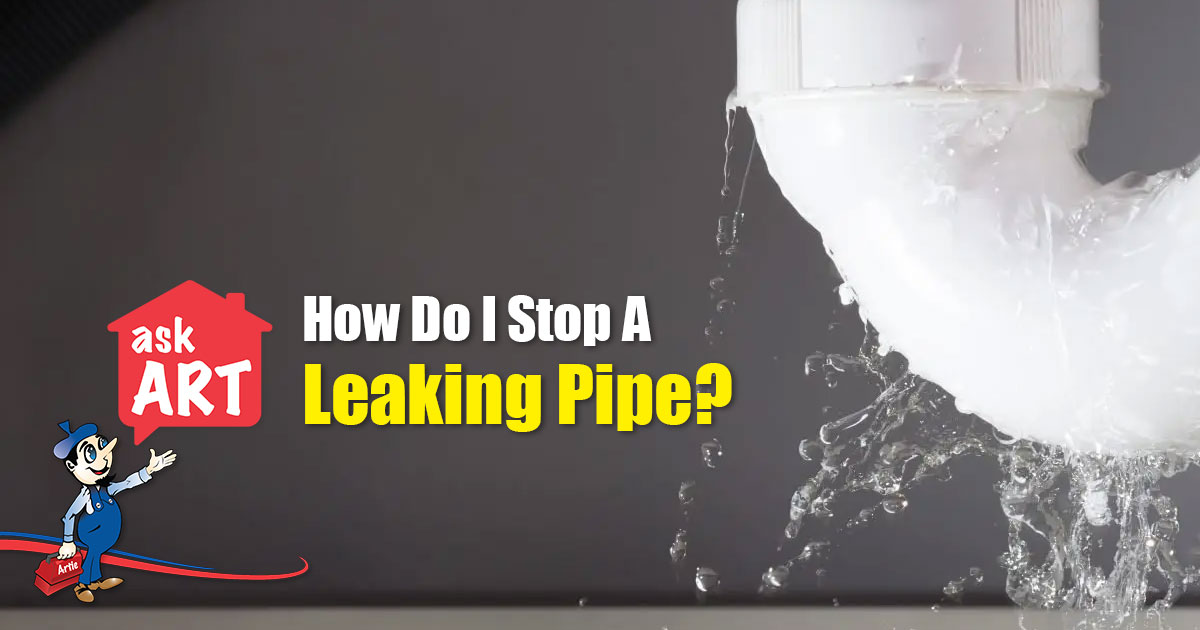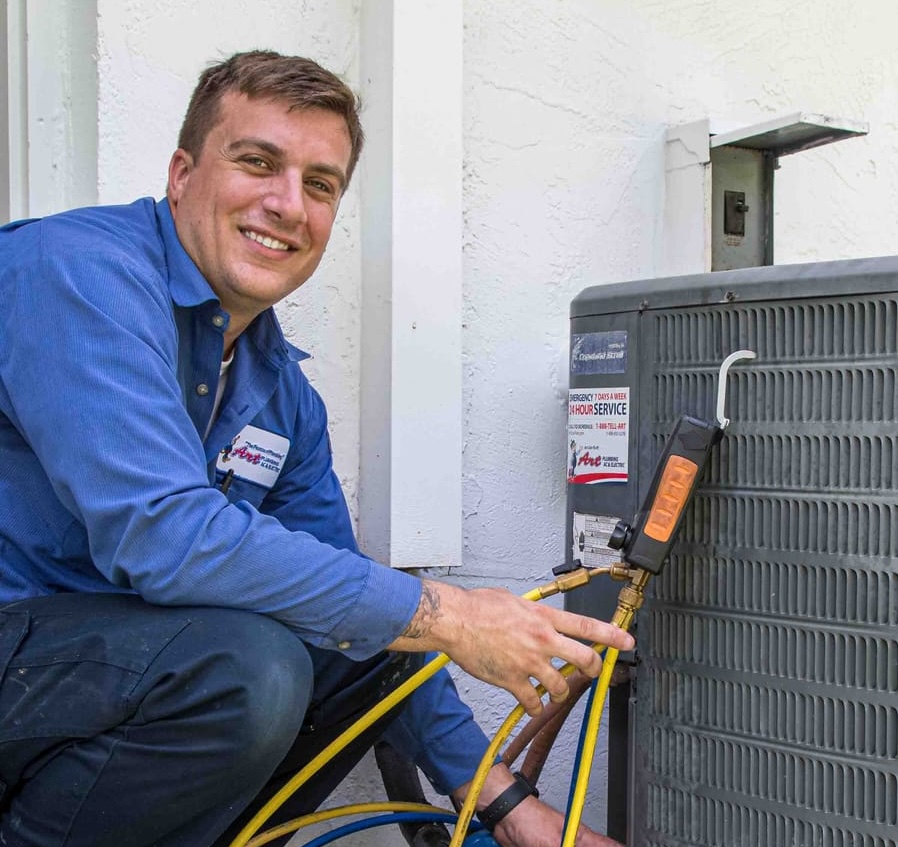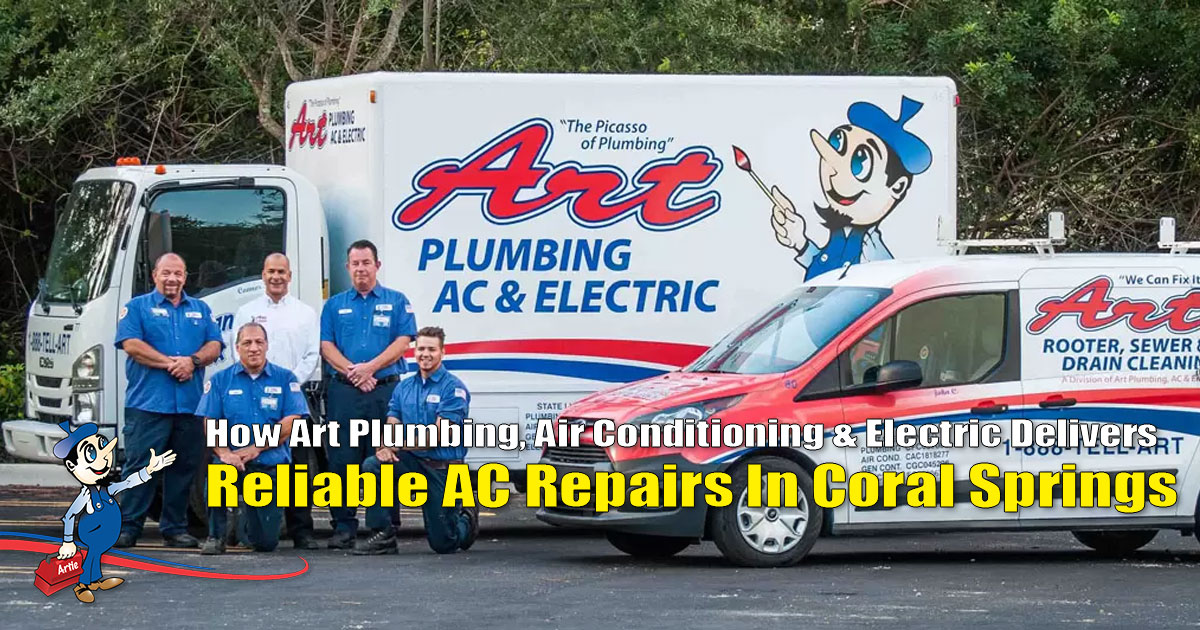Ask Art: How Do I Stop A Leaking Pipe?

It’s midnight and one of your pipes springs a leak. You are woken up by the sound of running water and shoot out of bed to find water spraying everywhere. You call a plumber, but what can you do to stop the leak wrecking your carpets and your floorboards while you wait for them? Just as important – are there things you shouldn’t do when dealing with leaking pipes?
Temporary Fixes For Dealing With Leaking Pipes
In an emergency, there are temporary quick fixes that you can do to contain the leak until a professional plumber gets there to do a long-term leak repair. Before attempting a temporary fix, find where the leak is, and see if you can shut the water supply off.
Leaks At A Threaded Joint
Drips from a threaded joint can be slowed down by using a wrench to tighten the joint. It may stop the leak completely, or it might slow it down enough to save your carpets.
Before you start, check if the pipe is threaded. If it isn’t a threaded pipe, don’t use a wrench. You should also avoid the wrench if you can see welding around the joint. Those types of joints can only be repaired by a plumber.
Small Holes In A Pipe
Big puddles can be caused by small holes. Fortunately, small holes are among the easiest to fix. Here are two different ways of tackling the problem.
A Pencil and Duct Tape
This might sound crazy, but it is a very effective temporary fix. Use a sharp pencil, stick the tip of the lead into the hole. Break the tip off and leave it stuck in the hole. Use duct tape wrapped around the pipe to hold the tip in place. The broken-off pencil lead will seal off the hole until a plumber can do proper repairs.
Seal The Leak With Epoxy Putty
For small holes or cracks in pipes, epoxy putty can seal off leaks temporarily. To use the putty properly, make sure you follow the manufacturer’s instructions. The putty will set in place, causing a hard seal that will keep the water in the pipe and away from your carpets.
Larger Holes Or Cracks
What if your pipes are leaking because of a big hole, or even worse, a crack? Don’t despair. With some old garden hose and a few clamps, you can stabilize the leak until the plumber arrives.
Cut a piece of garden hose long enough to extend past the hole or crack by two inches on either side. Split the hose lengthwise and slip it over the damaged pipe. Use three hose clamps to secure it, one on each end and one in the middle. This should shut off the leak. Once your temporary repair is in place, avoid using the plumbing in that area until after the plumber has inspected it. If there are still a few drips, a handy bucket should be enough to catch them.
Leaky Pipe Do’s and Don’ts
Pipes can spring leaks at the most inconvenient times. When you’re up to your ankles in water and it’s still rising, it can be hard to keep your cool. Here are some quick tips on what to do, and what not to do when you’re caught in the cross-spray.
Do…
- Find the main water supply to the affected area and shut it off.
- Call Art Plumbing, Air Conditioning & Electric to send a plumber to repair your leak, even if it’s a small leak.
- Use a big enough pot, bowl or bucket under the leak to help protect your carpets and floors while you wait for the plumber.
- Poke a small hole in the ceiling if it’s bulging. This will allow the excess water to drain where you want it to—into a bucket, for example. Otherwise, it may burst through the ceiling, and cause damage to your furniture or belongings.
Don’t…
- Rely on the temporary repair as a long-term solution. If the problem was an old, corroded pipe, it will tend to split elsewhere, and your problems will start all over again. Age affects plumbing pipes; they don’t last forever.
- Use the leak as an opportunity to take your untried soldering skills out for a test run on your copper pipes.
Why Is A Leaky Pipe A Good Reason To Call A Plumber?
Sometimes a leak is only a symptom of a bigger plumbing issue that needs to be addressed. Temporary fixes can lull you into a false sense of security, while the real issue is still brewing. Plumbers have the right tools, equipment, experience and knowledge to get to the root of your leak and make sure it’s fixed properly. Give Art Plumbing, Air Conditioning & Electric a call at 1-800-475-1504 and kiss your leak goodbye!



